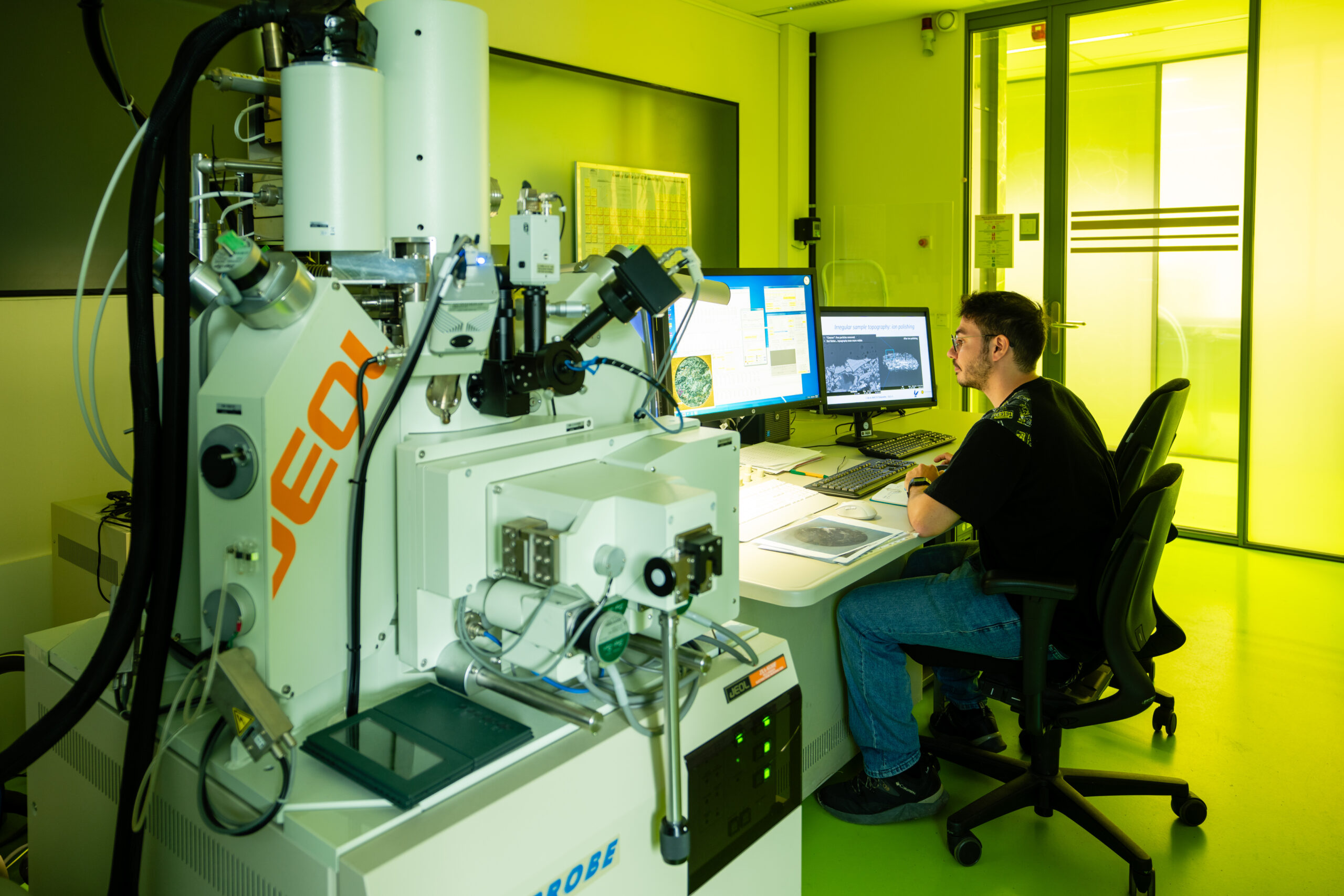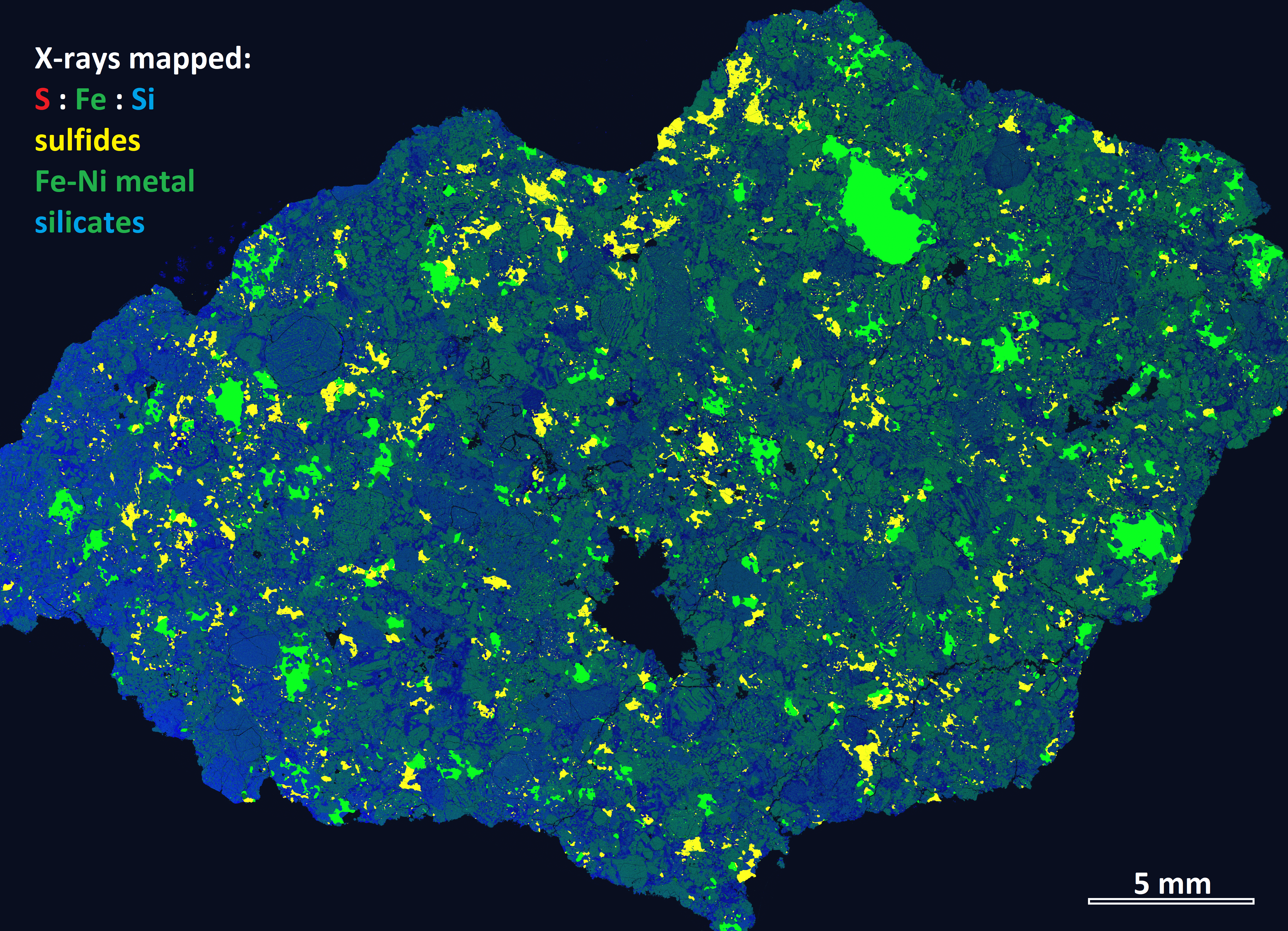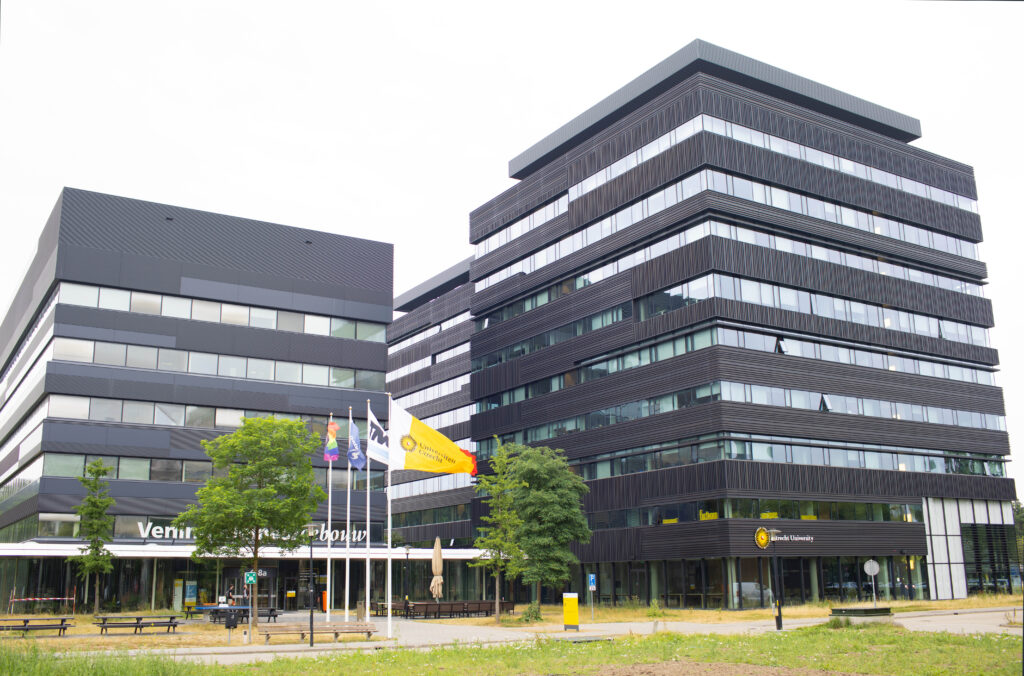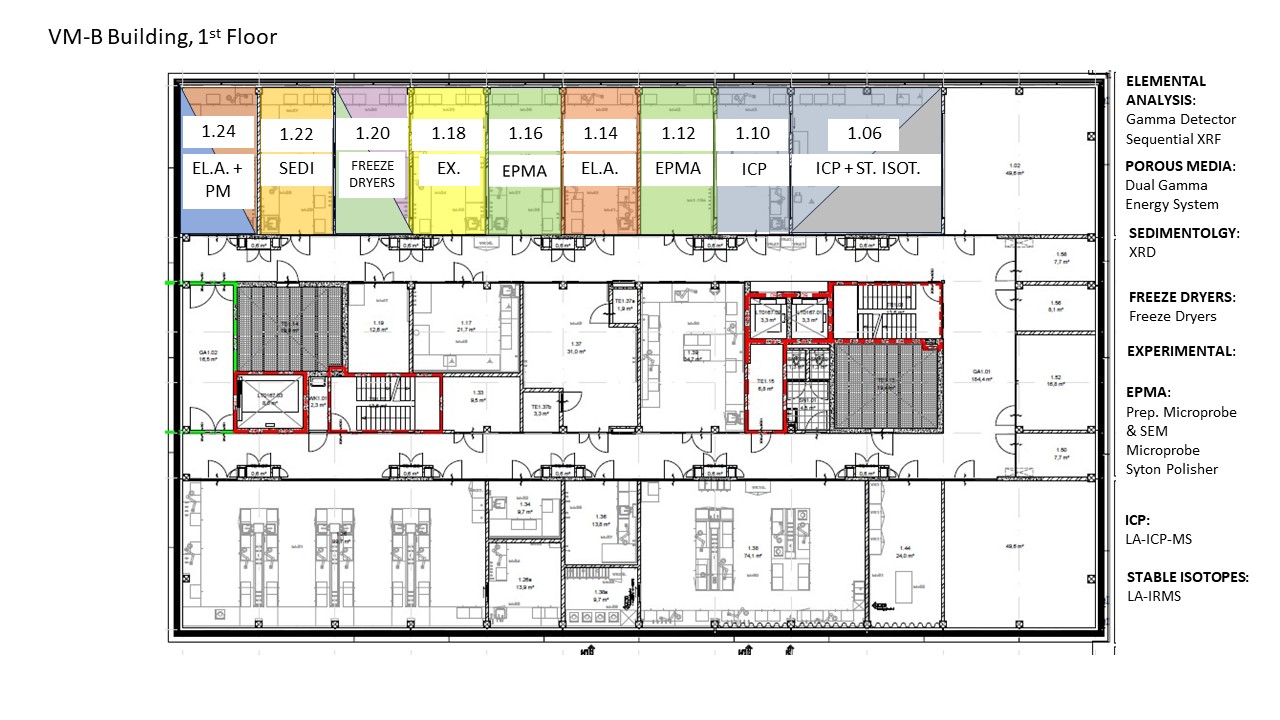EPMA (Microprobe) Lab
Read more about our national EPMA facility
In addition to quantitative spot measurements, we can acquire qualitative and quantitative element distribution maps, as well as cathodoluminescence (CL) images. EPMA measurements are non-destructive for most materials. As a Dutch national facility, our lab is open to internal and external users. Example of an element map. In this full thin section scan of the Utrecht meteorite, the distribution of 3 simultaneously acquired elements (sulfur, iron and silicon) shows the main mineralogical components of this meteorite: iron-nickel metal in bright green, iron sulfide (a mineral called “troilite”) in yellow, and a range of silicate minerals (mainly olivine and pyroxenes) in shades of blue and darker green. The Utrecht meteorite is an L6 ordinary chondrite that fell near Utrecht in 1843, now part of the Utrecht University meteorite collection curated by Inge Loes ten Kate.
Technical experts:
Scientific advisor:
Contact:
Eric Hellebrand
Coen MulderAlissa Kotowski
EPMA.geolab@uu.nl
 In the Microprobe Lab, we host an electron probe microanalyzer (EPMA). Our field-emission gun EPMA, a JEOL JXA-8530F Hyperprobe, allows us to obtain quantitative major and minor element concentrations on a micrometer scale. Any well-polished solid can be studied, but we mainly focus on a broad spectrum geomaterials including upper mantle rocks, volcanics, sediments, fossils, meteorites, and experimentally produced samples.
In the Microprobe Lab, we host an electron probe microanalyzer (EPMA). Our field-emission gun EPMA, a JEOL JXA-8530F Hyperprobe, allows us to obtain quantitative major and minor element concentrations on a micrometer scale. Any well-polished solid can be studied, but we mainly focus on a broad spectrum geomaterials including upper mantle rocks, volcanics, sediments, fossils, meteorites, and experimentally produced samples.



